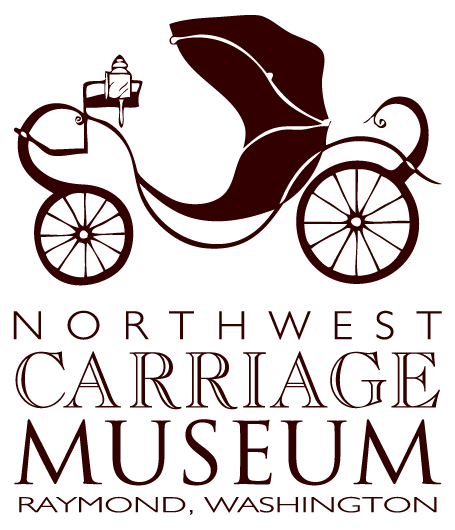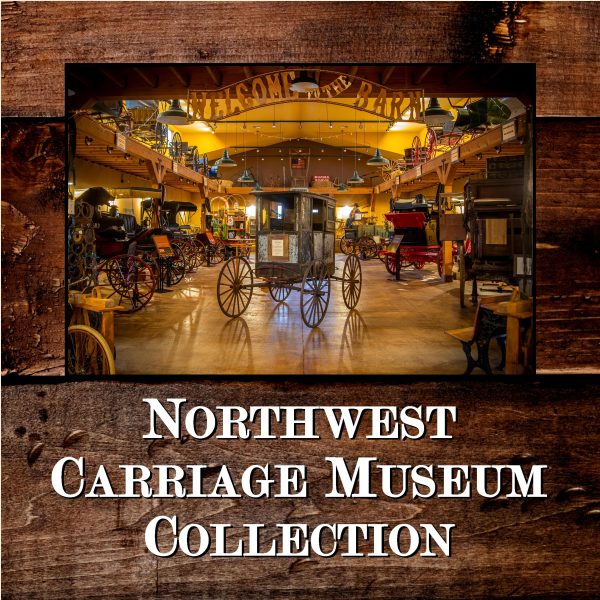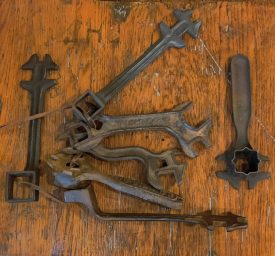
Did you know that a buggy wrench was the only tool needed to assemble your new buggy back in the 1890s? Often, buggies and other vehicles were ordered from catalogs; in fact, you could order a new buggy from the Sears catalog back in 1895 for $29.95. That buggy would be delivered to your home (not by Amazon) and all you needed to do was uncrate it, find your buggy wrench, and put it together. That little wrench fit your hub nuts and every other square nut on that buggy. Once assembled, just hook up your horse and go to town. Here’s another good idea: best take that wrench with you… you never know what might be loose after a ride to town! This original wrench is from our 1895 Studebaker buggy. I have actually used it on our buggy… pretty handy!
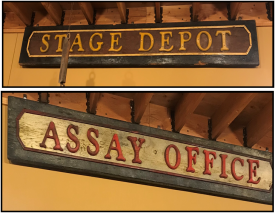 The Butterfield Overland Stagecoach Service operated from 1858 to 1861–it carried passengers and US mail from St Louis, Missouri to San Francisco, California. The route covered almost 2,800 miles through mostly the Southern states. The contract with the US Postal Service was 29 days to get mail across the country. It is estimated there were 175 stage stops along the route; one of those stops was Temecula, California which is now famous for their grape vineyards and wineries. These two signs, which once hung on buildings in Temecula during the Butterfield run, now hang proudly in the Museum’s Barn addition. They are remarkable pieces of American history.
The Butterfield Overland Stagecoach Service operated from 1858 to 1861–it carried passengers and US mail from St Louis, Missouri to San Francisco, California. The route covered almost 2,800 miles through mostly the Southern states. The contract with the US Postal Service was 29 days to get mail across the country. It is estimated there were 175 stage stops along the route; one of those stops was Temecula, California which is now famous for their grape vineyards and wineries. These two signs, which once hung on buildings in Temecula during the Butterfield run, now hang proudly in the Museum’s Barn addition. They are remarkable pieces of American history.
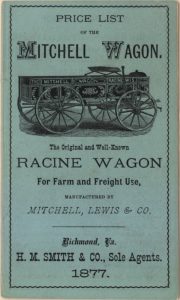
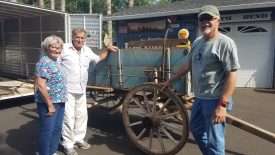 This beautiful Mitchell Farm Wagon was conserved several years ago and is currently on display in the museum. Michell Lewis was one of America’s finest wagon makers and was known for building strong and durable wagons out of Racine, Wisconsin during the second half of the 19th century. In 1882, William Mitchell, grandson of founder Henry Mitchell, opened a West coast facility in Portland, Oregon. Wagons being built in Racine were shipped via railroad to Portland, where they were sold. In 1892, Mitchell Lewis merged with Staver and Walker, producer of plows and related farm equipment. The new company was named “Mitchell Lewis and Staver.” Our wagon was originally bought by a farm family near Battle Ground, Washington in 1892. That family had it for many years and eventually sold it to another farm family who had it 61 years. Members from that family, while on a car club tour at our museum, offered to donate the wagon to us. We are the third owners of this historic vehicle. It was in the shop for several months, undergoing a complete conservation. We were able to save almost the complete vehicle–including original paint, pin stripping, and patina. The wagon is totally functional and very historical. Mitchell Lewis went on to make cars and trucks in the early 20th century. Mitchell Lewis Staver is still in business and based in Portland: they make and sell agricultural irrigation systems around the world.
This beautiful Mitchell Farm Wagon was conserved several years ago and is currently on display in the museum. Michell Lewis was one of America’s finest wagon makers and was known for building strong and durable wagons out of Racine, Wisconsin during the second half of the 19th century. In 1882, William Mitchell, grandson of founder Henry Mitchell, opened a West coast facility in Portland, Oregon. Wagons being built in Racine were shipped via railroad to Portland, where they were sold. In 1892, Mitchell Lewis merged with Staver and Walker, producer of plows and related farm equipment. The new company was named “Mitchell Lewis and Staver.” Our wagon was originally bought by a farm family near Battle Ground, Washington in 1892. That family had it for many years and eventually sold it to another farm family who had it 61 years. Members from that family, while on a car club tour at our museum, offered to donate the wagon to us. We are the third owners of this historic vehicle. It was in the shop for several months, undergoing a complete conservation. We were able to save almost the complete vehicle–including original paint, pin stripping, and patina. The wagon is totally functional and very historical. Mitchell Lewis went on to make cars and trucks in the early 20th century. Mitchell Lewis Staver is still in business and based in Portland: they make and sell agricultural irrigation systems around the world.
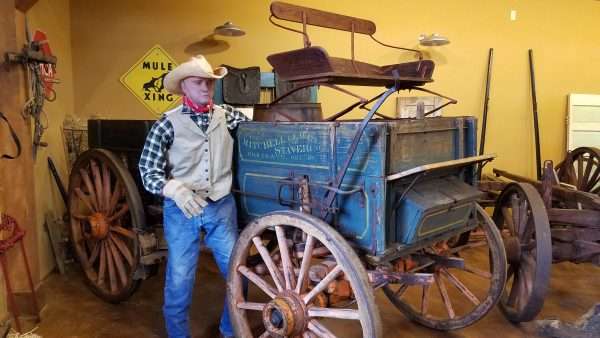
 Aside from our incredible collection of horse-drawn vehicles, we have so many other fascinating artifacts to look at in the museum. Here is a “pole” or “spoon” shovel hanging in our Wheelwright/Blacksmith shop. These shovels were commonly used in the early 20th century (1910 to 1940) for digging telephone/power poles. They were replaced with electric augers or power digging machines. Some handles were over 10 feet long. These long spoon shovels were used by 10 to 12 man crews along with spades (pointed shovels) and steel bars to dig deep power pole holes.
Aside from our incredible collection of horse-drawn vehicles, we have so many other fascinating artifacts to look at in the museum. Here is a “pole” or “spoon” shovel hanging in our Wheelwright/Blacksmith shop. These shovels were commonly used in the early 20th century (1910 to 1940) for digging telephone/power poles. They were replaced with electric augers or power digging machines. Some handles were over 10 feet long. These long spoon shovels were used by 10 to 12 man crews along with spades (pointed shovels) and steel bars to dig deep power pole holes.







